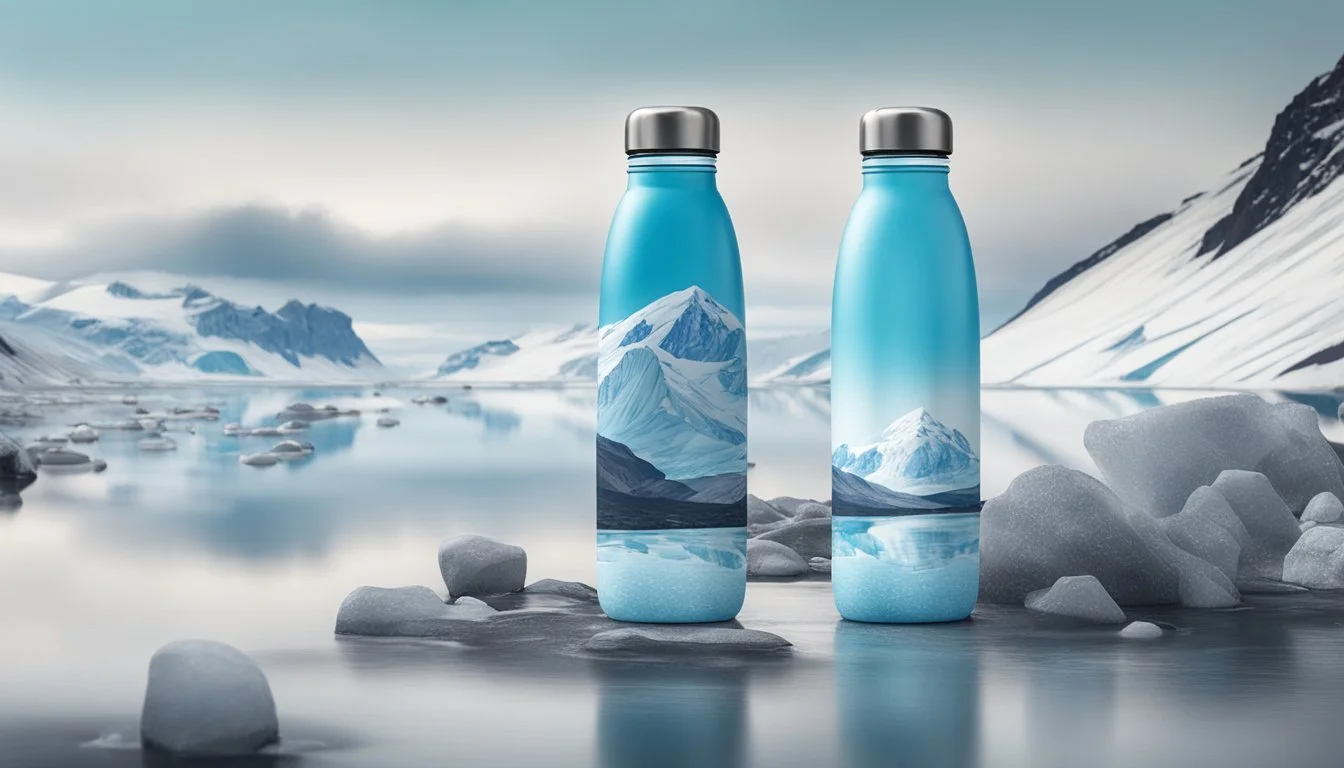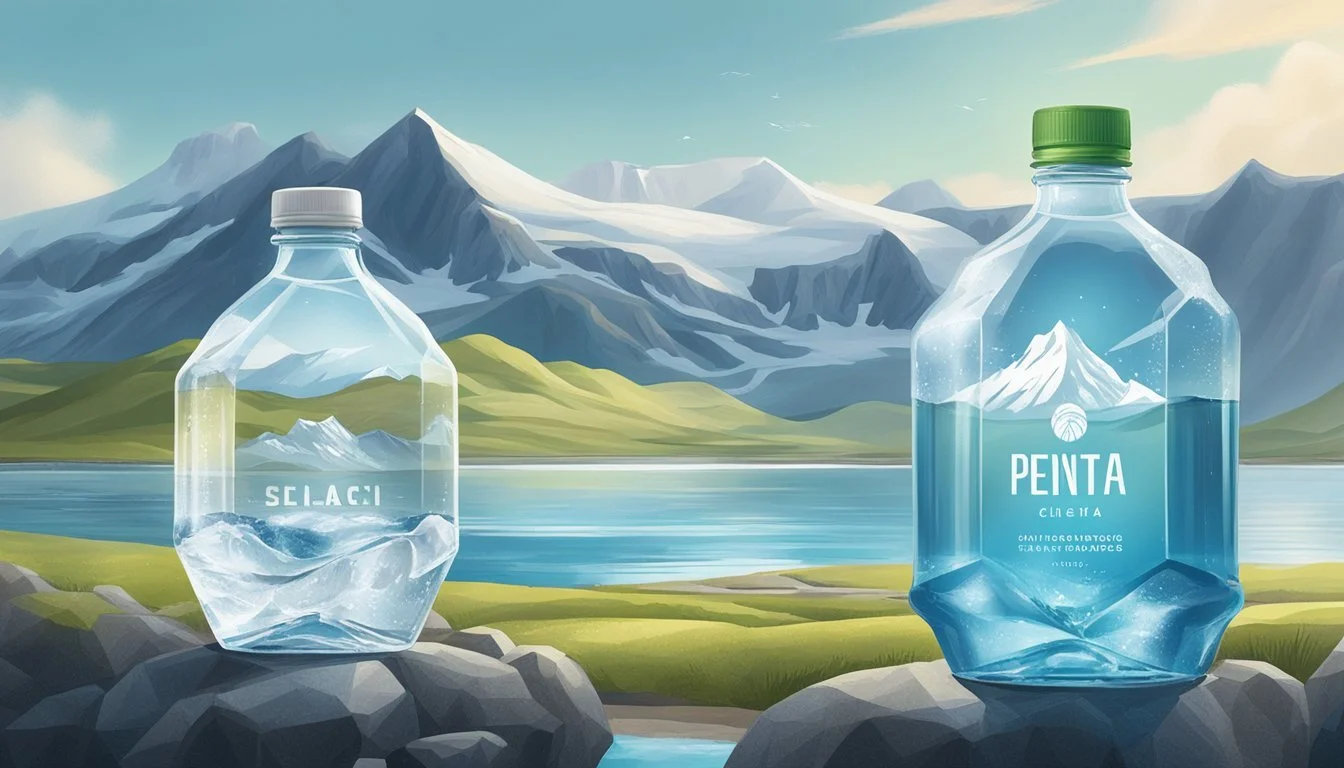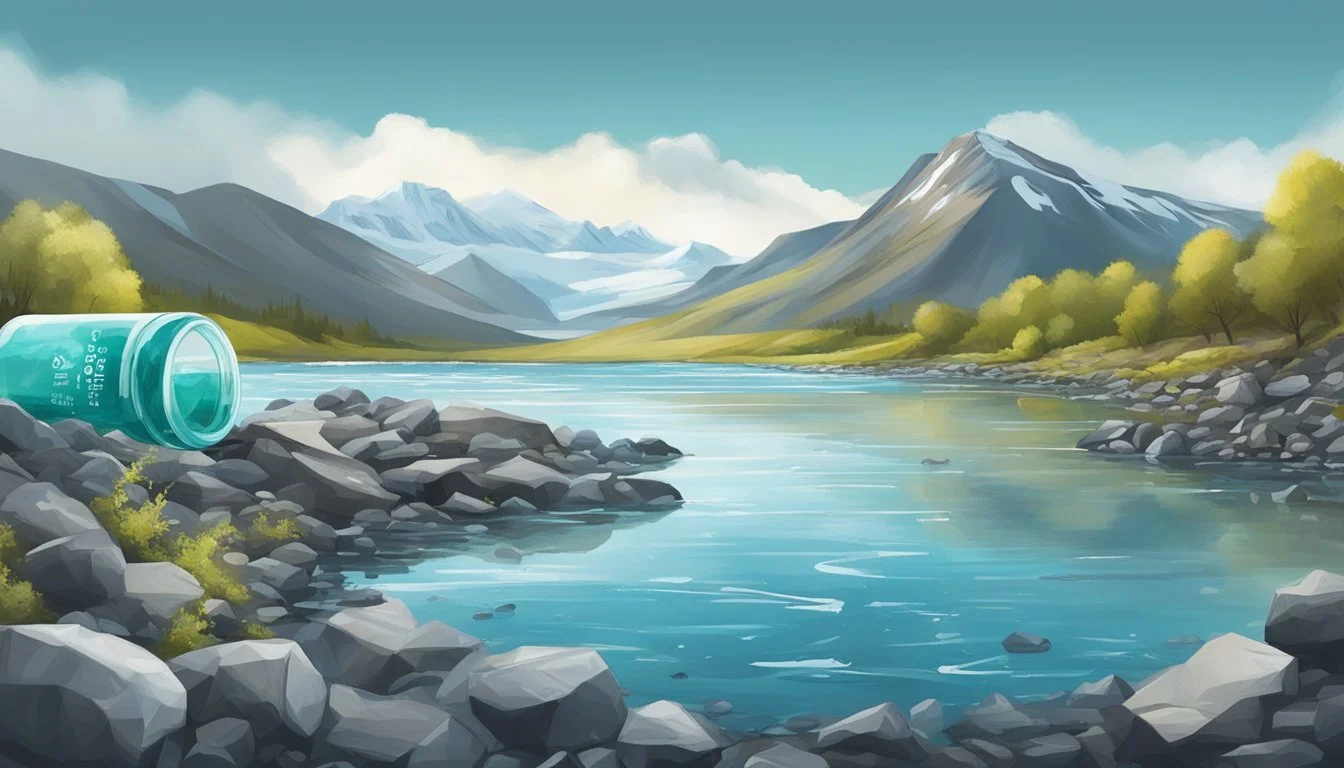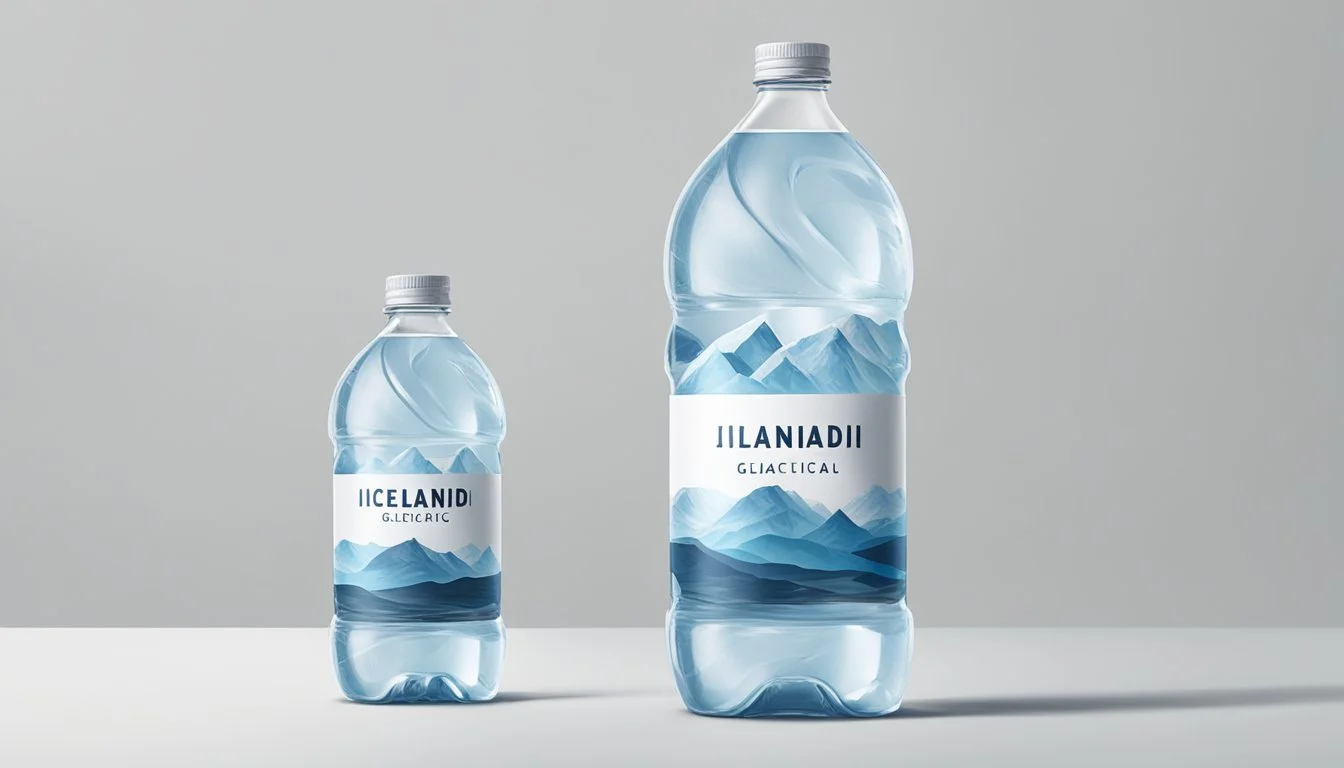Icelandic Glacial vs. Penta
A Comparative Analysis of Bottled Water Quality
In the realm of premium bottled waters, consumers often find themselves comparing different brands to discern which one delivers not only refreshing hydration but also purity and health benefits. Two brands that frequently come under scrutiny are Icelandic Glacial and Penta. Icelandic Glacial boasts of offering water of exceptional cleanness sourced from the Ölfus Spring in Iceland, which is naturally filtered through lava rock, resulting in alkaline water with beneficial minerals. The brand has cultivated a loyal following, and many users highlight the water's taste and quality.
On the other side of the spectrum is Penta, a brand known for its ultra-purified drinking water. Penta's water undergoes a rigorous 13-step purification process, which includes UV light treatment and is advertised as free from additives and contaminants. This has placed Penta as a choice for consumers seeking purity in their bottled water. The comparison between Icelandic Glacial's natural purity and Penta's scientifically enhanced purification creates a compelling discussion for consumers dedicated to choosing the best bottled water for their needs.
Overview of Icelandic Glacial and Penta
Icelandic Glacial and Penta are two bottled water brands renowned for their purity and unique processing methods. Each brand boasts a specific source of water and employs distinct bottling processes that set them apart in the bottled water market.
Brand Histories and Recognition
Icelandic Glacial emerges from the pristine Ölfus Spring in Iceland, a source forged through centuries of filtration through volcanic rock. This brand has gained international recognition not just for its origin but also for the taste and quality of its water. Penta, on the other hand, is known for its ultra-pure water, which undergoes an extensive 13-step purification process, taking 11 hours to complete. Both brands have their loyal consumers, and reviews reflect their unwavering loyalty, particularly on platforms like Amazon.
Source and Origin of Waters
The Ölfus Spring is the lifeblood of Icelandic Glacial, a spring that is replenished by rain and snow melting through Iceland's volcanic landscapes. The lava rocks endow the water with a natural filtration system. Icelandic Glacial is bottled at the source, ensuring that the water remains untouched by human processes until it reaches consumers. Penta, while not as forthcoming regarding a natural source location like Icelandic Glacial, prides itself on its scientifically advanced purification that mimics the natural filtration process, aimed at delivering purity in every bottle.
Bottling Processes and Sustainability
Icelandic Glacial utilizes a state-of-the-art facility that operates completely sustainably. Their bottles are made from fully recyclable materials, which underlines the brand's commitment to reducing its carbon footprint. In contrast, Penta emphasizes its advanced technology, which includes a US-patented 13-step purification process designed to produce water of exceptional purity. Penta's process eliminates contaminants while also focusing on delivering a product that is aimed at promoting health benefits, like retaining youthful skin. Both brands not only ensure the quality of water reaching their consumers but also consciously make efforts to adopt sustainable and environmentally friendly practices.
Chemical and Physical Properties of Water
This section specifically addresses the pivotal characteristics of water which impact its quality including pH levels, mineral content, and taste profile. These factors directly contribute to determining the superiority between Icelandic Glacial and Penta bottled waters.
pH Levels and Alkalinity
Icelandic Glacial water boasts a naturally high pH level of 8.4, categorizing it as alkaline water. Alkaline water typically contains bicarbonate salts which contribute to this elevated pH. This contrasts with many bottled waters that have neutral pH levels close to 7. Penta, not explicitly advertising alkalinity, is expected to have a pH that closely mimics that of pure water unless specifically modified.
Mineral Content Analysis
Mineral content in water is often characterized by Total Dissolved Solids (TDS), which encapsulates numerous minerals such as calcium, magnesium, and potassium. These are electrolytes and contribute to the taste and health benefits of the water. Icelandic Glacial, sourced from the Ölfus Spring, is not only remarkably pure but also contains beneficial minerals. In contrast, Penta water undergoes a patented process that includes deionization, stripping away not only contaminants but also many dissolved minerals, resulting in a nearly fluoride-free and significantly lower TDS level.
Taste Profile and Water Palatability
The taste of water is greatly affected by its mineral content and TDS. Higher TDS levels can impart a distinctive taste, often perceived as more "refreshing" or "flavorful". Icelandic Glacial's natural filtration through lava rock enhances its taste with a clean and crisp profile. Penta's intensive purification process aims for absolute purity, which may result in a taste described as neutral or flat, as the removal of minerals and electrolytes can affect the overall palatability.
Both Icelandic Glacial and Penta offer unique water experiences that cater to different preferences in taste and mineral composition, each delivering their distinct interpretation of purity and quality.
Health and Hydration
Choosing the right bottled water is crucial for both hydration and health benefits. Icelandic Glacial and Penta are two brands that stand out, but they differ in their mineral content and pH levels, which can affect health and hydration.
Hydration Benefits
Hydration is primarily about water balance in the body. Both Icelandic Glacial and Penta provide hydration, but the mineral content and pH levels of the water play a role in how effectively the body absorbs and utilizes the water. Icelandic Glacial is an alkaline water with a pH level typically above 8.0, which is believed by some to help maintain the body's optimal pH balance. Alkaline water often contains electrolytes such as potassium and magnesium, which are essential for hydration.
Health Considerations of Bottled Water
When discussing health, one should consider the purity and mineral content of bottled water. Icelandic Glacial boasts low levels of nitrates and a high oxygen content, factors that can be beneficial to health. Penta, on the other hand, is ultra-purified and advertises itself as being free of additives and pollutants. The process also claims to provide water with smaller clusters, which might assist in quicker hydration. Health-conscious consumers often look for a TDS (Total Dissolved Solids) level that reflects the right balance of minerals without contamination, which both of these brands aim to provide.
Environmental Impact and Sustainability
As consumer awareness of environmental issues grows, companies like Icelandic Glacial and Penta are scrutinized for their sustainability efforts, particularly in bottle materials and water source preservation.
Bottle Materials and Recycling Efforts
Icelandic Glacial utilizes 100% recyclable materials for their bottle and cardboard packaging. They offer bottles made from high-grade rPET, which is a recycled plastic, and these bottles are also BPA-free. The company steps up its commitment with an optional glass bottle line, catering to a segment of the market that prefers more traditional and potentially more sustainable packaging.
Bottle Types:
rPET
Glass (optional)
Key Features:
100% Recyclable
BPA-free
Penta, on the other hand, should also consider similar practices if staying competitive in sustainable packaging is a priority. Utilizing recyclable and BPA-free materials can help reduce waste and address consumer concerns.
Water Source Conservation
Icelandic Glacial claims a strong connection to environmental preservation with its water sourced from the Ölfus Spring in Iceland, renowned for its purity. This spring is naturally replenished by filtration through lava rock, ensuring minimal human impact on the water's quality. The company emphasizes that their bottling plant is located at the edge of the spring, hinting at low transportation emissions.
Source: Ölfus Spring
Conservation Efforts:
Natural filtration through lava rock
On-site bottling plant
Penta's approach to water source conservation should similarly involve protecting the watershed and minimizing the ecological footprint. By focusing on such strategies, both companies can aid in preserving the natural quality of the water and reduce the environmental impact often associated with large-scale water extraction.
Comparative Analysis of Penta vs. Icelandic Glacial
In assessing Penta and Icelandic Glacial bottled waters, the analysis focuses on the design practicality of the bottles and the value proposition the brands offer through pricing.
Bottle Design and Consumer Convenience
Icelandic Glacial features a distinctive, ergonomic design that aims to enhance grip and usability for consumers. The bottle's sleek and clear appearance also aligns with the brand's image of purity. In terms of convenience, Icelandic Glacial bottles come in various sizes, catering to different consumer needs, from personal use to larger gatherings.
Penta, on the other hand, presents a straightforward, minimalist design focused on delivering water in its purest form. Its bottles are designed to be durable, which appeals to consumers who prioritize robust packaging during transportation or outdoor activities. However, Penta’s bottle options are typically less diverse in size compared to Icelandic Glacial, offering fewer tailored choices for consumer convenience.
Price Comparison and Value
When comparing prices, Penta water is often seen as a premium brand due to its specialized ultra-purification process, which may reflect in higher costs. Consumers are usually willing to pay extra for the brand's claims of health and skincare benefits derived from hydration with Penta’s ultra-pure water.
Contrastingly, Icelandic Glacial offers competitive pricing given its positioning as a premium, naturally alkaline water sourced from Iceland's pristine environment. The value proposition of Icelandic Glacial hinges on the combination of quality and affordability, appealing to a broad consumer base seeking high-quality water without exorbitant prices.
In conclusion, a consumer's choice between Penta and Icelandic Glacial might hinge on individual preferences for bottle design features like aesthetics and practicality, as well as the perceived value for money aligned with personal budget constraints.
Comparison with Other Popular Brands
Icelandic Glacial and Penta are recognized for their distinctive place in the bottled water market and are often contrasted with other leading brands for their quality and market presence.
Market Position Amongst Competing Brands
Icelandic Glacial stands out among competitors due to its origin from the Ölfus Spring in Iceland, giving it a unique market niche. Utilizing naturally occurring minerals and a high pH level, it holds a reputation for purity and sustainability. Penta, although less known, positions itself with ultra-purified water that uses a patented 13-step purification process.
Prominent brands in the market:
Fiji Water: Known for its smooth taste and artesian source.
Evian: Sourced from the French Alps and popular for its mineral content.
Smartwater: Distilled by Coca-Cola, with added electrolytes.
Essentia: Alkaline water with a high pH, often chosen for its purported health benefits.
Dasani: Coca-Cola's filtered tap water with added minerals.
Aquafina: PepsiCo's purified drinking water, advertised as pure and free from electrolytes.
Nestlé Pure Life: Widely available but has a more generic taste compared to others.
Both Icelandic Glacial and Penta are not as widely distributed as brands like Nestlé Pure Life or Dasani, but they are frequently sought after for their unique qualities.
Water Quality Rankings
Water quality is frequently debated among connoisseurs and consumers alike, and brands strive for recognition in this aspect.
Notable mentions for high water quality:
Icelandic Glacial Water: Pristine and with a naturally high pH, offering a distinctively crisp taste.
Penta: Exceptionally pure due to its intensive purification process.
Voss: Norwegian brand known for low mineral content and sleek packaging.
Mountain Valley Spring Water: Sourced from the Ouachita Mountains in the United States, appreciated for its taste and mineral content.
Amongst other competing brands, Fiji is often celebrated for its soft mouthfeel and natural silica content, while San Pellegrino and Gerolsteiner are favored choices for sparkling water enthusiasts, with San Pellegrino also noted for its mineral complexity. Conversely, some brands like Nestlé Pure Life and Dasani are positioned lower in taste rankings despite their strong market presence. These rankings impact consumer choices, but it's important to note that preferences for water taste are highly subjective.
Consumer Insights and Reviews
Consumer preferences and experiences play a crucial role in distinguishing between bottled water brands. This section delves into the loyalty customers have towards Icelandic Glacial and Penta and their perceptions regarding the quality and benefits of the water they consume.
Brand Loyalty and Repeat Purchases
Customers often express allegiance to Icelandic Glacial due to its environmental commitments and the perceived purity of its water. With over 10,000 reviews on Amazon, a consistent trend is the high rate of repeat purchases, indicating strong brand loyalty. In contrast, Penta, not as widely reviewed or publicized as Icelandic Glacial, still maintains a dedicated base that values the brand's specific purification process and its claims of health benefits.
Table: Brand Loyalty Comparison
Brand Repeat Purchase Interest Review Trends Environmental Commitment Icelandic Glacial High High praise for purity Strong Penta Moderate Appreciation for purification process Not widely cited
Perception of Water Quality and Benefits
Icelandic Glacial boasts a neutral taste and a pH level of 8.4, appealing to those who are conscious about the acidity of their beverages. Its source, an ancient glacier, is also a significant selling point for those considering the natural origin and purity of their water. Penta's merit lies in its rigorous purification process and its focus on health benefits, such as the claim of ultra-pure water free of unwanted chemicals and contaminants.
List: Water Quality Attributes
Icelandic Glacial
Natural source from glaciers
Neutral taste
pH level of 8.4
Penta
Advanced purification process
Claims of enhanced health benefits
Focus on purity without added chemicals
Both brands capitalize on different aspects of water quality to appeal to health-conscious consumers. They aimed at positioning themselves as healthier alternatives to typical bottled waters, with Icelandic Glacial emphasizing its natural origin and Penta emphasizing its purification technology.
Innovations and Future Trends in Bottled Water
The bottled water industry is seeing rapid advancements in purification technologies and a noticeable shift in consumer consumption patterns. These developments are leading to more refined products and changing the ways consumers select and use bottled water.
Technological Advancements in Purification
Companies in the bottled water market are implementing cutting-edge purification processes to enhance the quality of their products. Reverse osmosis is a staple in water purification, with brands like Penta utilizing this technique extensively to eliminate impurities. Advancements result in water that is not only pure but also boasts added qualities such as being supercharged to support hydration during workouts.
Icelandic Glacial, on the other hand, uses its natural filtration through lava rock, which bears resemblance to the Hydro-7 purification process—a method designed to filter out impurities while retaining essential minerals. This juxtaposition of natural and engineered purification methods underlines a future where technology aims to mimic and enhance nature's own processes.
Trends in Consumer Preferences and Consumption Patterns
Consumer preferences are shifting towards convenience and health benefits, guiding companies to develop innovative solutions. There is a growing demand for bottles that are easier to carry and use, reflecting a lifestyle that values practicality. Alkaline water with naturally high pH levels, such as that provided by Icelandic Glacial, is gaining popularity for its perceived health benefits.
Consumers are also turning to bottled water that supports specific lifestyle needs, such as those enhanced with electrolytes for workouts. Brands that highlight the quality and source of their water, like Icelandic Glacial with its origin from the Ölfus Spring in Iceland, are leveraging this trend to appeal to consumers who value purity and sustainability alongside the functional enhancements of blutriton additives and similar innovations.
The future of bottled water sees a blend of natural sources and technological enhancements meeting diverse consumer demands.
Final Considerations and Recommendations
When comparing Icelandic Glacial and Penta bottled water brands, several factors merit attention for consumers prioritizing hydration and health.
For those concerned with pH levels, Icelandic Glacial boasts naturally high alkalinity due to its volcanic source. In contrast, Penta uses a patented process to enhance water purity and oxygenation, which may appeal to consumers valuing technological enhancement in water filtration.
Regarding taste, both brands provide a clean and refreshing experience. However, taste is subjective and can depend on individual preference, making water testing a useful exercise for discerning buyers.
Icelandic Glacial is noted for its commitment to environmental sustainability, with a 100% recyclable rPET bottle, while Penta emphasizes its high-performance, BPA-free plastic bottle for those seeking convenience and durability.
Here is a brief comparison:
Aspect Icelandic Glacial Penta Source Natural spring, Iceland U.S. municipal sources pH Level Naturally alkaline Purified and oxygenated Bottle Material rPET, 100% recyclable BPA-free plastic Environmental Note Carbon neutral company Focus on purity and performance Unique Selling Point Ancient water, renewable sourcing Patented purification process
Consumers should also consider the wider context of bottled water versus tap water. Those with access to safe tap water may find it a more sustainable and cost-effective solution, potentially enhanced with a quality filter. Brands like Fiji, known for its artesian source, or Aqua, offer alternative tastes and mineral content for those seeking variety in bottled waters.
In summary, Icelandic Glacial may suit those who value natural mineral content and environmental ethics, whereas Penta may appeal to those prioritizing advanced purification techniques and specific health claims. As sustainability becomes increasingly important, consumers may also want to weigh the impact of their choices on the environment, remembering that glass options and local sources can further reduce the carbon footprint of hydration.







